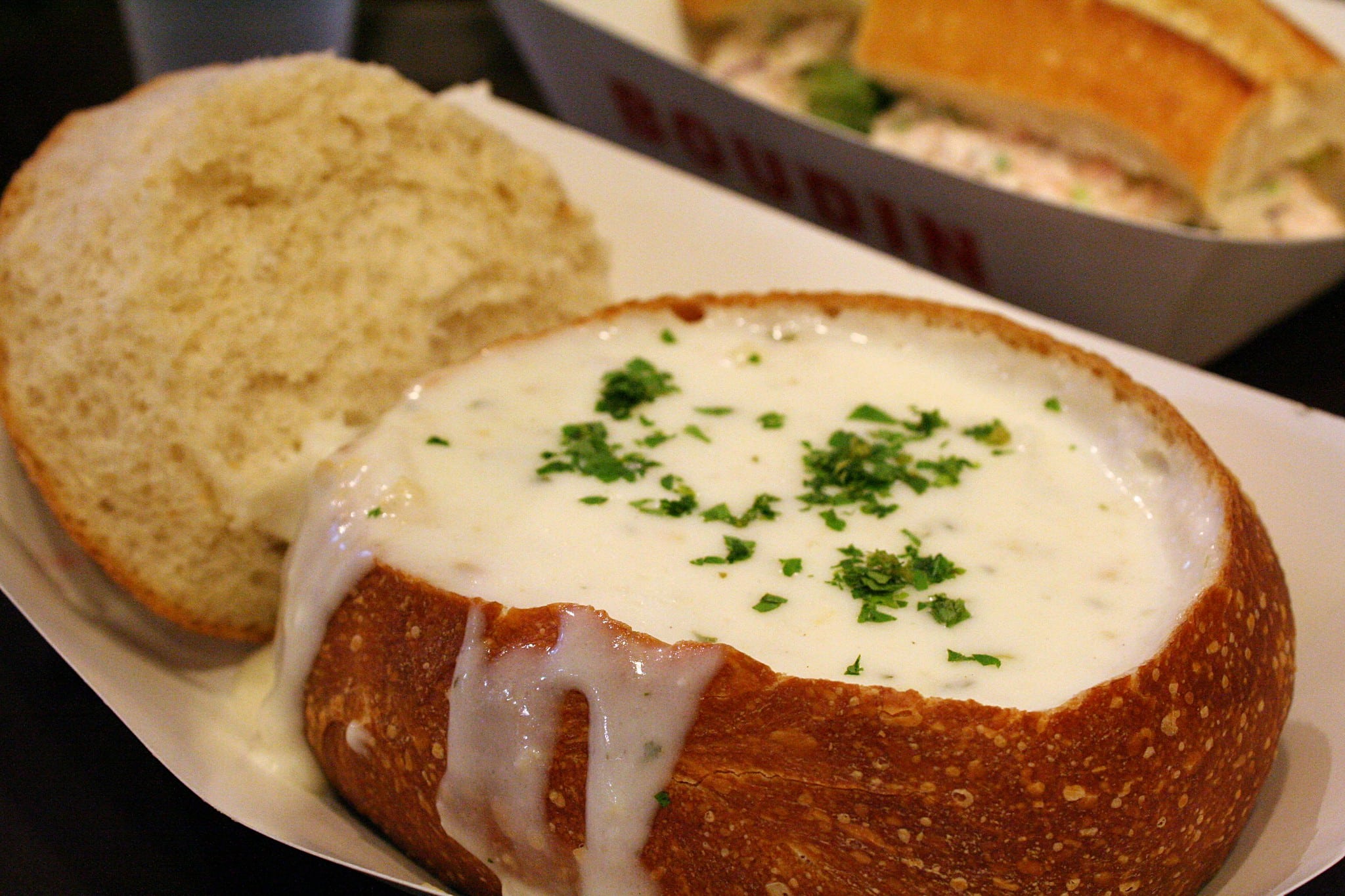
Soup Season is Here.
The nights are getting colder – unless you’re in San Francisco and every summer night is cold. That means it’s soup time! Learn the bread bowl history and when the sourdough bowl was created.
Bread Bowl History & the Origins of the Sourdough Boule Bowl
The very first bread bowl for soup was invented long before San Francisco made it famous.
The history goes as far back as 1427 when an Irish nobleman created a bread bowl filled with soup to impress a British duke. His efforts paid off as the duke gave him money to open up his own bread bowl shop in Dublin.
Over a hundred years later in the 16th century, the New English-style chowder originated off the Atlantic coast of France. Back then, chowder referred to any soup or stew made by sailors and fishermen.
Soon after, the love of chowder spread across Europe; and as English settlers moved to America, they also brought their recipes.
The first versions of chowder in America were made using eel, potatoes, and celery. Native Americans introduced them to clams which were a staple part of their diet. As Europeans made their way westward, they continued to bring their family recipes for clam chowder.
In the 1980s, San Francisco wanted to find a way to market their clam chowder. So what better way than by using the city’s famous sourdough bread. The sourdough boule was the perfect vessel for a bowl of soup (boule meaning ball in French).
The sourdough boule bowl quickly popularized across the nation and made it was a great way to charge more for a bowl of soup. Today, you can enjoy a hearty sourdough boule bowl at the classic and famous Boudin Bakery.
Sign up for my newsletter on the sidebar for blog updates and my travel insider tips! And, check out my vlogs on YouTube!


